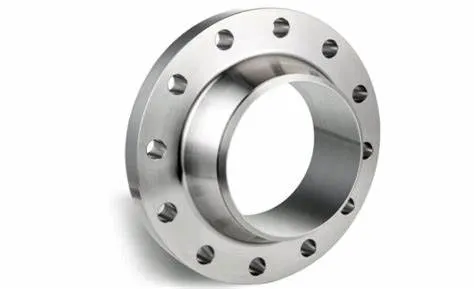-
Cangzhou Yulong Steel Co., Ltd.
-
Phone:
+86 13303177267 -
Email:
admin@ylsteelfittings.com
- English
- Arabic
- Italian
- Spanish
- Portuguese
- German
- kazakh
- Persian
- Greek
- French
- Russian
- Polish
- Thai
- Indonesian
- Vietnamese
- Zulu
- Korean
- Uzbek
- Hindi
- Serbian
- Malay
- Ukrainian
- Gujarati
- Haitian Creole
- hausa
- hawaiian
- Hebrew
- Miao
- Hungarian
- Icelandic
- igbo
- irish
- Japanese
- Javanese
- Kannada
- Khmer
- Rwandese
- Afrikaans
- Albanian
- Amharic
- Armenian
- Azerbaijani
- Basque
- Belarusian
- Bengali
- Bosnian
- Bulgarian
- Catalan
- Cebuano
- China
- China (Taiwan)
- Corsican
- Croatian
- Czech
- Danish
- Esperanto
- Estonian
- Finnish
- Frisian
- Galician
- Georgian
- Kurdish
- Kyrgyz
- Lao
- Latin
- Latvian
- Lithuanian
- Luxembourgish
- Macedonian
- Malgashi
- Malayalam
- Maltese
- Maori
- Marathi
- Mongolian
- Myanmar
- Nepali
- Norwegian
- Norwegian
- Occitan
- Pashto
- Dutch
- Punjabi
- Romanian
- Samoan
- Scottish Gaelic
- Sesotho
- Shona
- Sindhi
- Sinhala
- Slovak
- Slovenian
- Somali
- Sundanese
- Swahili
- Swedish
- Tagalog
- Tajik
- Tamil
- Tatar
- Telugu
- Turkish
- Turkmen
- Urdu
- Uighur
- Welsh
- Bantu
- Yiddish
- Yoruba

Nov . 22, 2024 23:13 Back to list
carbon steel concentric reducer
Understanding Carbon Steel Concentric Reducers A Comprehensive Overview
In the world of piping systems, carbon steel concentric reducers play a pivotal role in ensuring efficient fluid flow and pressure regulation. These fittings, designed to connect pipes of differing diameters, are essential in various industrial applications, including oil and gas, water treatment, and manufacturing. This article explores the features, benefits, applications, and manufacturing processes of carbon steel concentric reducers.
What is a Concentric Reducer?
A concentric reducer is a type of pipe fitting that allows for a gradual reduction in pipe diameter. It is designed in a way that the larger and smaller ends are aligned on the same axis, creating a smooth transition for fluid flow. In contrast to eccentric reducers, which have a flat edge and can be used to maintain the same elevation in a piping system, concentric reducers provide a symmetrical flow path, reducing turbulence and promoting efficient flow.
Material Composition The Importance of Carbon Steel
Carbon steel is an alloy of iron and carbon, known for its high strength, durability, and versatility. It is one of the most commonly used materials in the manufacturing of concentric reducers due to its excellent mechanical properties and cost-effectiveness. The carbon content, which can vary from low to high, influences the material's hardness, tensile strength, and ductility. For instance
- Low Carbon Steel (up to 0.3% carbon) Offers good weldability and ductility, making it ideal for structural applications. - Medium Carbon Steel (0.3% - 0.6% carbon) Strikes a balance between strength and ductility, suitable for moderately stressed applications. - High Carbon Steel (0.6% - 2% carbon) Provides high strength but lower ductility, often used in high-strength applications.
The choice of carbon steel type largely depends on the specific requirements of the piping system, including pressure, temperature, and the nature of the transported fluids.
Key Features of Carbon Steel Concentric Reducers
1. Pressure Resistance Carbon steel concentric reducers are designed to withstand high pressures, making them suitable for demanding environments. 2. Corrosion Resistance While carbon steel is subjected to corrosion, various coatings and treatments can be applied to enhance its resistance, particularly in corrosive media.
3. Temperature Tolerance These reducers can handle a wide range of temperatures, making them suitable for both cryogenic and high-temperature applications.
4. Customizable Sizes Carbon steel concentric reducers can be manufactured in various sizes to meet the specific needs of a piping system, ensuring compatibility with existing infrastructure.
carbon steel concentric reducer

Applications of Carbon Steel Concentric Reducers
Carbon steel concentric reducers find applications across several industries
- Oil and Gas Used in pipelines to connect different pipe sizes and facilitate the transport of crude oil, natural gas, and refined products. - Water Treatment Essential in water supply systems to connect pipelines of varying diameters and ensure efficient flow.
- Manufacturing Employed in the production of machinery and equipment where varying pipe sizes are necessary.
- Chemical Processing Suitable for handling chemicals safely and efficiently within diverse processing environments.
Manufacturing Process
The manufacturing of carbon steel concentric reducers involves several key steps
1. Material Selection Choosing the appropriate grade of carbon steel based on the intended application. 2. Forming The steel is heated and formed into the desired shape using techniques like forging or bending.
3. Welding If the reducer is fabricated from multiple pieces, these components are welded together using suitable welding methods to ensure structural integrity.
4. Finishing The final shape is polished, and any required coatings for corrosion resistance are applied.
5. Quality Control Each product undergoes rigorous testing to ensure it meets industry standards and specifications.
Conclusion
Carbon steel concentric reducers are critical components in various piping systems, offering a reliable solution for connecting pipes of different diameters. Their robustness, versatility, and cost-effectiveness make them a popular choice across multiple industries. As industrial processes continue to evolve, the demand for high-quality fittings like carbon steel concentric reducers will undoubtedly persist, highlighting the importance of these devices in modern infrastructure. Understanding their characteristics, applications, and manufacturing processes allows engineers and technicians to make informed decisions, contributing to safer and more efficient operations.
Latest news
-
ANSI 150P SS304 SO FLANGE
NewsFeb.14,2025
-
ASTM A333GR6 STEEL PIPE
NewsJan.20,2025
-
ANSI B16.5 WELDING NECK FLANGE
NewsJan.15,2026
-
ANSI B16.5 SLIP-ON FLANGE
NewsApr.19,2024
-
SABS 1123 FLANGE
NewsJan.15,2025
-
DIN86044 PLATE FLANGE
NewsApr.19,2024
-
DIN2527 BLIND FLANGE
NewsApr.12,2024
-
JIS B2311 Butt-Welding Fittings LR/SR 45°/90° /180°Seamless/Weld
NewsApr.23,2024











